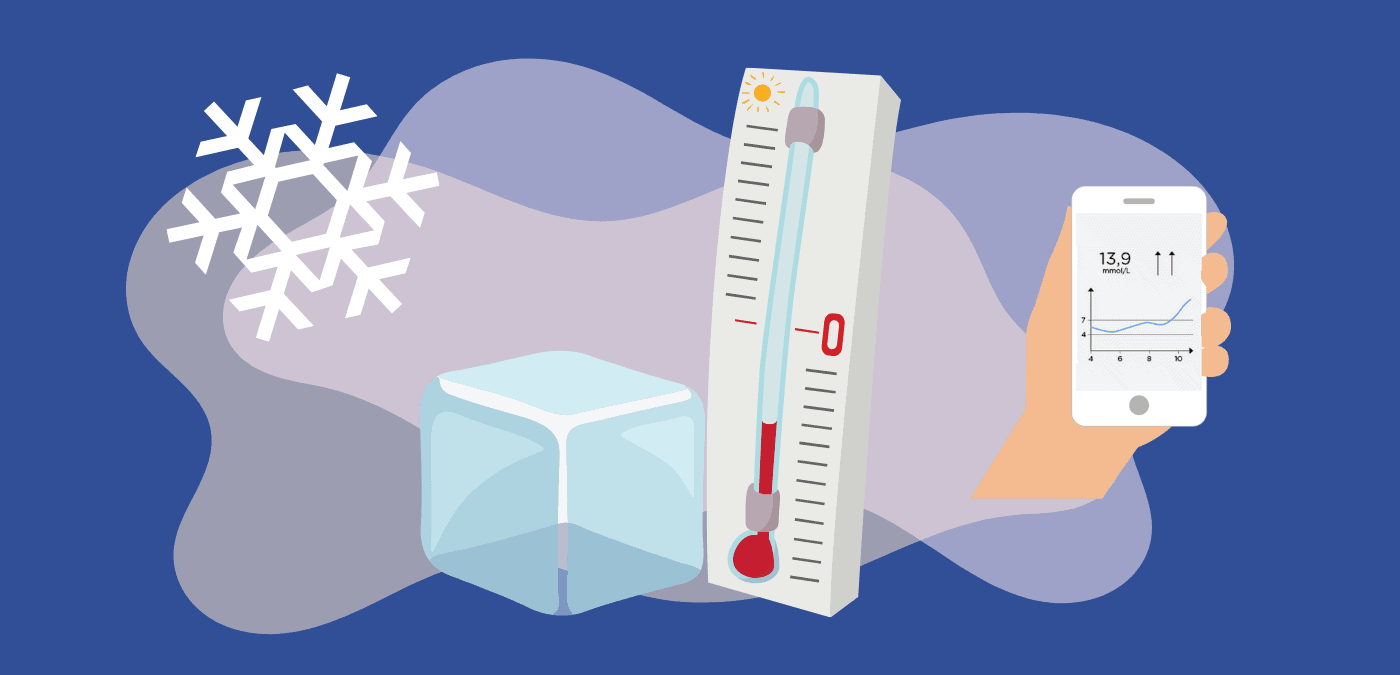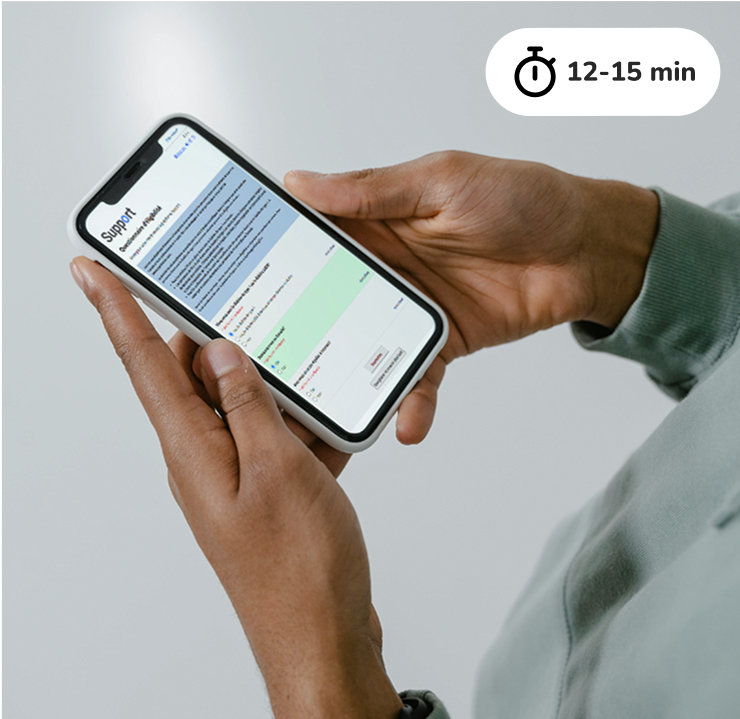Exercise is good for the body and soul. It improves your well-being and promotes socialization. Physical activity can also reduce your risk of cardiovascular disease, and help you manage stress and maintain a healthy weight.
For people with type 1 diabetes (T1D), exercising improves insulin sensitivity (i.e., the body has a better insulin response), which can reduce insulin needs.
Physical activity is even more important for young people with T1D because it helps them build habits that will contribute to their long-term health.
Unfortunately, according to several academic studies and the International Society for Pediatric and Adolescent Diabetes (ISPAD), children and teens with T1D exercise less than their non-diabetic peers.
Teens with T1D are more sedentary
These studies show that young people with T1D generally have a harder time meeting international recommendations for physical activity than non-diabetic youths.
According to the World Health Organization (WHO) and the Canadian Society for Exercise Physiology, children and teens aged 5 to 17 should engage in 60 minutes per day of moderate to vigorous physical activity involving a variety of aerobic activities. Muscle and bone strengthening activities (muscle conditioning) should also be incorporated at least three times per week, and sitting for extended periods should be limited.
Young people with T1D also have lower cardiorespiratory (heart and lung) fitness – an indicator of cardiovascular health –, and a lower aerobic physical capacity (cardiovascular fitness).
This trend seems to affect girls more than boys and starts at a very young age.
Fear of hypoglycemia: an obstacle to physical activity
In addition to the obstacles faced by the general population (lack of time, lack of access to sports facilities, etc.), fear of hypoglycemia or problems with blood sugar management are the main barriers to physical activity among children and teens with T1D, according to the small number of studies carried out among this population. Further studies will be needed to better understand all the factors affecting this sedentary lifestyle trend.
Recent data suggests, however, that there are not as many obstacles when young people use a continuous glucose monitor (CGM) or an insulin pump.
Not all types of physical activity will lower blood sugar
Each type of exercise has a different effect on the body. Low- to moderate-intensity activities performed for an extended period of time, also known as aerobic activities (hiking, biking, jogging, long-distance swimming, etc.) generally cause a decrease in blood sugar levels.
Very-high-intensity activities performed for a short period of time, also known as anaerobic activities (weightlifting, sprinting, boxing, hockey) will instead cause blood sugar to rise in some people. This can also happen during athletic competitions when stress hormones kick in.
Finally, activities that combine several levels of intensity and duration (intervals), such as basketball or soccer, will make blood sugar fluctuate.
Regardless of the type of physical activity, many factors lead to blood sugar variations, such as intensity, duration, time of day, time of the last insulin dose, etc. This makes it difficult for your child with T1D to anticipate what will happen with their blood sugar.
In every case, there are two specific moments where the risk of hypoglycemia is higher: while doing physical activity, and several hours later when the muscles are restocking their sugar (glycogen) reserves.
Blood sugar can be properly managed while exercising
There are strategies to optimize blood sugar control during physical activity. Here are a few that you can use with your child or suggest to your teen:
- Adjusting insulin intake: Insulin can be adjusted depending on the activity, timing of blood sugar measurements, etc. For instance, you can generally decrease the quantity of insulin before an aerobic activity to prevent hypoglycemia during and immediately after exercise and over the following night. This requires anticipating the physical activity that will be performed in the next few hours. The insulin dose often needs to be reduced a lot more than what you might think.
-
- Example 1: For one hour of biking after a meal, you can reduce the mealtime bolus by up to 50%, depending on the intensity of the activity and the carb intake.
-
- Example 2: Someone who uses an insulin pump and goes for a one-hour jog at the end of the afternoon will generally need to decrease their basal rate by 80% for 60 to 90 minutes before starting their run, and maintain it at that level until the activity is over.
There’s no need to reduce the insulin dosage in some cases, e.g., before a weightlifting session. But for some very intense exercises, you may need to administer a small dose of insulin (bolus), or increase the basal rate temporarily if using a pump. New semi-automatic pumps (artificial pancreases) have a physical activity functionality that can be activated 60 to 90 minutes prior to exercising.
- If needed, eating a snack with fast-acting carbs (e.g., juice, apple sauce, fruit bar, etc.), for example, if your blood sugar level is somewhat low at the start of the activity or drops during the activity. For most types of exercise, you’ll need approximately 0.5 kg of carbs per kg of body weight for one hour of activity (e.g., 30 g of carbs for someone who weighs 60 kg).
- Keeping sources of quick-acting sugars on hand (e.g., Dex4 glucose tablets, Rockets candy, sugar packets, etc.) in case of hypoglycemia.
- Drinking lots of water to stay well hydrated. Dehydration increases the concentration of glucose in the blood.
- Checking your blood sugar regularly not only during, but also after physical activity, because hypoglycemia can occur several hours later. Using a CGM makes this task a lot easier, but you should be aware that during the activity, the sensor may overestimate your actual blood sugar level. So, it’s important to set a threshold and to look at the trend arrows to prevent hypoglycemia before your blood sugar drops below 4.0 mmol/L.
- Keeping a fitness journal: You can use this journal to write down the type of exercise, the time of day (e.g., after a meal, daytime, evening), duration, quick-acting sugar intake and snacks. Basically, you can write down anything that can help you identify the impacts of your activities on your blood sugar.
Some reference tools
If your child wants to start working out, they can start with an at-home program. If your child is already physically active, a webinar dealing with physical activity and type 1 diabetes will help you better understand the relationship between exercise and blood sugar levels. Watch or rewatch it with your child!
There are multiple factors that can explain blood sugar variations, but you can learn to recognize them with a bit of research and experience.
And don’t forget that you absolutely can combine exercise and T1D. Many high-level athletes are able to do it, such as hockey player Max Domi, endurance athlete Sébastien Sasseville, Olympic rowing champion Chris Jarvis, tennis player Alexander Zverev, and rugby player Anne-Frédérique Simard, just to name a few.
Additional resource: Pediatric Diabetes – Part 3: Advanced Diabetes Knowledge
References:
- Huerta-Uribe, N. et al. (2023). Youth with type 1 diabetes mellitus are more inactive and sedentary than apparently healthy peers: A systematic review and meta-analysis. Diabetes Research and Clinical Practice: 110697. https://www.diabetesresearchclinicalpractice.com/article/S0168-8227(23)00460-6/fulltext
- Brazeau A-S., Rabasa-Lhoret R., Strychar I., Mircescu H. (2008). Barriers to physical activity among patients with type 1 diabetes. Diabetes Care 31(11): 2108-9. https://pubmed.ncbi.nlm.nih.gov/18689694/
- FRDJ. Faire de l’exercice et rester actif. Page consulted on May 31st, 2023. https://www.frdj.ca/vivre-avec-le-dt1/lexercise-et-le-diabete-de-type-1/
- De Kerdanet, M. and Heyman E. (2019). Diabétologie de l’enfant, chapitre 21 : Activité physique et diabète de type 1 chez l’enfant et l’adolescent : Pourquoi? Comment? Elsevier. https://www.elsevier.com/fr-fr/connect/pediatrie/activite-physique-et-diabete-de-type-1-chez-lenfant-et-ladolescent-pourquoi-comment-
- FRDJ. How Different Types of Exercise Affect Blood Sugar. Page consulted on May 31st, 2023. https://www.jdrf.org/t1d-resources/living-with-t1d/exercise/exercise-impact/
- Huynh, L. et al. (Winter 2021-2022). Diabète de type 1 – Recommandations et stratégies pour l’activité physique. Revue Plein Soleil, Diabète Québec. https://type1better.com/wp-content/uploads/2021/12/2021_PS4_IRCM.pdf
Written by: Nathalie Kinnard, scientific writter and research assistant
Reviewed by :
- Sarah Haag, R.N., B.Sc.
- Remi Rabasa-Lhoret, M.D., Ph.D.
- Amélie Roy-Fleming, P.Dt., M.Sc.
- Anne-Sophie Brazeau, R.D., Ph.D.
- Marie-Christine Payette, Claude Laforest, Jacques Pelletier, Sonia Fontaine, Aude Bandini, Amélie Eloudou, Michel Dostie, patient partners for the BETTER project.





